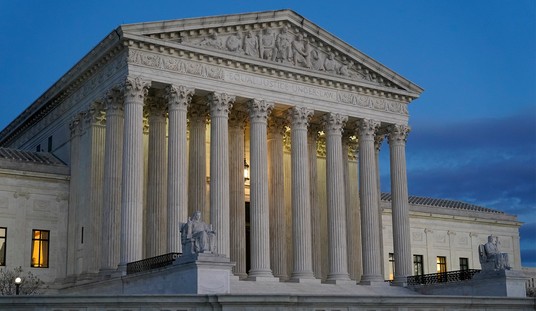It will forever be a blot on American justice. On Feb. 19, 1942, the patron saint of liberalism, Franklin D. Roosevelt, aided by such luminaries as California Attorney General Earl Warren, a future Supreme Court Chief Justice known for his judicial activism, signed the order that placed 125,000 Japanese people in what were euphemistically called "internment camps."
The "camps" were concentration camps in all but name. Roosevelt signed Executive Order 9066, which was supposedly designed to prevent sabotage and spying by the Japanese. Instead, it was a purely political reaction to the anti-Japanese hysteria that swept the country, especially on the West Coast.
Most of the 125,000 victims of the internment camps were American citizens, making the transgression even more heinous.
Just hours after the Pearl Harbor attack, the FBI rounded up more than 1,200 Japanese Americans, arresting them without evidence and seizing their assets. Also, the FBI carried out warrantless searches on thousands of Japanese homes, seizing "contraband." More than 1,500 Hawaiians were sent to prison camps on the mainland.
Lt. General John L. DeWitt, in command of West Coast defenses, laid out a plan suggesting "military zones" and Japanese internment to Secretary of War Henry Stimson and Attorney General Francis Biddle. Originally, DeWitt called for the incarceration of Germans and Italians as well, but that wasn't politically sustainable.
The camps were built and the authority to remove Americans of Japanese descent began.
A civilian organization called the War Relocation Authority was set up in March 1942 to administer the plan, with Milton S. Eisenhower from the Department of Agriculture to lead it. Eisenhower only lasted until June 1942, resigning in protest over what he characterized as incarcerating innocent citizens.
Army-directed removals began on March 24. People had six days notice to dispose of their belongings other than what they could carry.
Anyone who was at least 1/16th Japanese was evacuated, including 17,000 children under age 10, as well as several thousand elderly and disabled residents.
Japanese Americans reported to "Assembly Centers" near their homes. From there they were transported to a "Relocation Center" where they might live for months before transfer to a permanent "Wartime Residence."
The survivors were mostly young children when they were sent to the camps.
"I was a child and so I feel that I was protected by my mother, [and] my two older sisters. My older sister at the time was 10 years old and so she knew that something was really not right," said Flora Ninomiya who was imprisoned at Camp Amache in Colorado.
Saburo Fukuda was 7 years old when the FBI came for her father.
"It was a very confusing period for me not understanding what was going on and from that point on we didn't see father for three years," said Fukuda.
The ordeal of being incarcerated didn't end when the prisoners were released in 1945. In what one official called “one of the greatest swindles in America’s boisterous history,” the Japanese, forced to leave literally everything behind, discovered their land, their property, including their personal belongings had been seized. Many of those headed for the camps desperately tried to get any amount for anything they had of value. Others hoped that a neighbor or friend would watch their belongings.
That proved a forlorn hope.
A year after the war ended, the War Relocation Authority, which set up and ran the camps, worked up a 112-page apology. Not exercising responsibility for safeguarding the property of the evacuees allowed “an interval of golden opportunity to swindlers and tricksters who had a terrified group of people at their mercy,” according to the apology. Almost 40 years in the future, a congressional commission would calculate the property losses, in 1983 dollars, at $1.3 billion, and a net income loss of $2.7 billion.
So eight decades ago, they came back, not only dispossessed of property but subjected to some of the same abuse they’d experienced when they were taken away. The Interior secretary, Harold Ickes, was a man who sometimes parted company with his own administration’s policy over what he wasn’t reluctant to call “concentration camps.”
In California, in the four months after detainees began leaving the camps, the War Relocation Authority report found two dozen incidents of intimidation or violence.
For many, the ordeal wasn't over. Trying to collect what the U.S. government allowed others to take or what the government took proved to be a decades-long struggle. The government was paying out about 15 cents on the dollar for more claims. Then in 1988, Ronald Reagan signed a bill authorizing a cash payment of $20,000 for each living Japanese American citizen or legal resident who’d been imprisoned, then numbering about 80,000. There was also an apology.
FULL TEXT OF U.S. APOLOGY:
The United States Government:
Declares that: (1) a grave injustice was done to citizens and permanent resident aliens of Japanese ancestry by the evacuation, relocation, and internment of civilians during World War II; (2) these actions were without security reasons and without any acts of espionage or sabotage documented by the Commission on Wartime Relocation and Internment of Civilians, and were motivated by racial prejudice, wartime hysteria, and a failure of political leadership; (3) the excluded individuals suffered enormous damages for which appropriate compensation has not been made; and (4) the Congress apologizes on behalf of the Nation.
Declares that: (1) the Aleut civilian residents of certain islands who were relocated during World War II remained relocated long after any potential danger had passed; (2) the United States failed to provide reasonable care for the Aleuts, resulting in illness, disease, and death, and failed to protect Aleut personal and community property; (3) the United States has not compensated the Aleuts adequately; and (4) there is no remedy for injustices suffered by the Aleuts except an Act of Congress.










